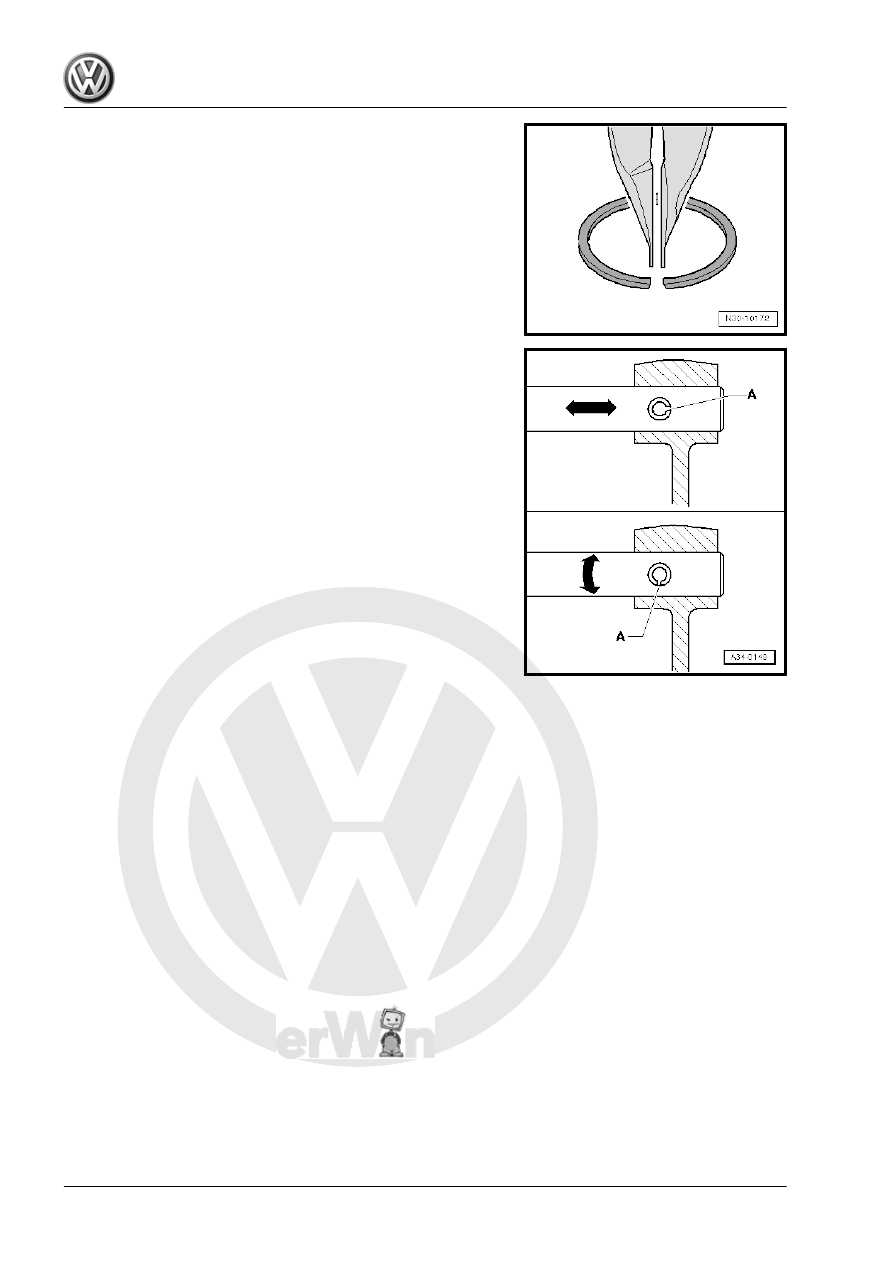Volkswagen Golf / Golf GTI / Golf Variant. Service manual - part 483

Fasteners
♦ Do not stretch the circlips.
♦ Installation position for some of the circlips: The circlip is »nar‐
rower at the top« and so is its installation position. This makes
it easier for the pliers to grab the circlip when removing and
installing it.
♦ Replace damaged or overstretched locking ring after remov‐
ing.
♦ The circlips must rest at the bottom of the groove.
♦ Replace the adapter sleeves. Installation position: the slot
-A- should align with the line of force -arrow-.